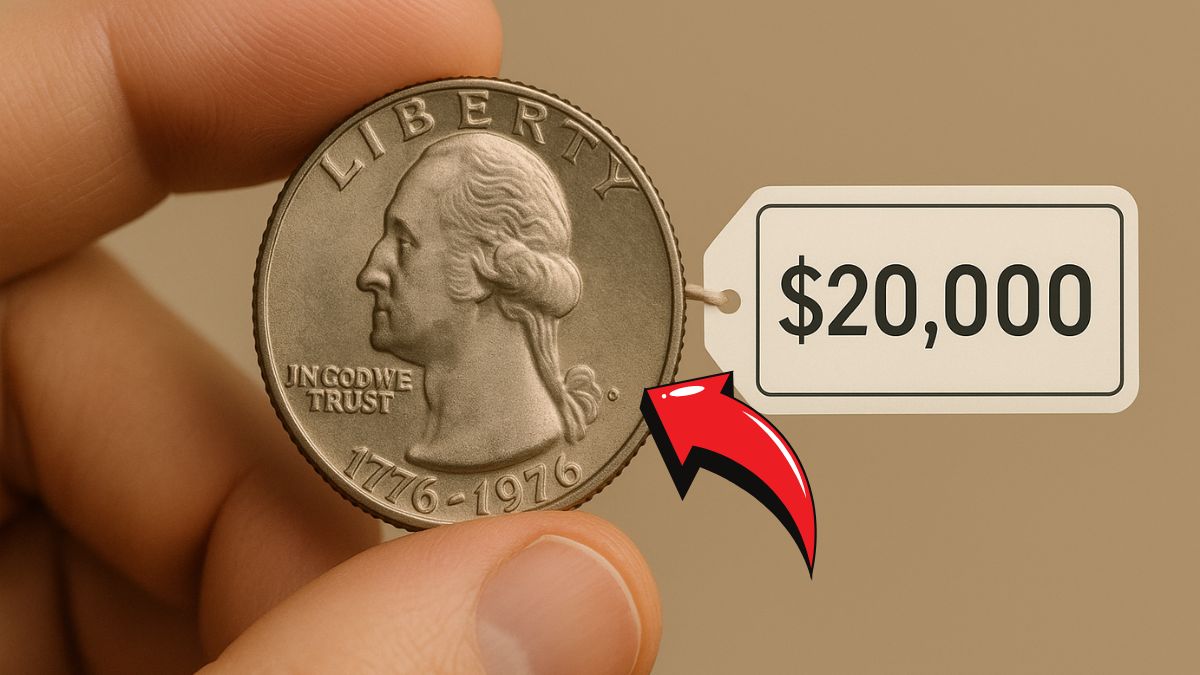In a remarkable turn of events, a 1976 Bicentennial Quarter, long forgotten in a coin collection, has recently been appraised at over $20,000, capturing the attention of numismatists and collectors worldwide.
This discovery underscores the potential value hidden within everyday currency, especially coins minted during significant historical milestones.
The Bicentennial Quarter: A Commemorative Coin
The 1976 Bicentennial Quarter was issued to commemorate the 200th anniversary of the United States’ independence.
Unlike standard quarters, this coin features a unique reverse design depicting a colonial drummer and a torch encircled by 13 stars, representing the original colonies.
The obverse retains the familiar profile of George Washington but is marked with dual dates, 1776–1976, signifying the bicentennial celebration.
Factors Contributing to the Quarter’s High Value
Several key elements can elevate the value of a 1976 Bicentennial Quarter:
- Mint Errors: Coins with minting anomalies, such as double die obverse (DDO), off-center strikes, or filled mint marks, are highly sought after. These errors occur during the coin production process and are relatively rare.
- Silver Composition: While most quarters are composed of a copper-nickel clad, some 1976 Bicentennial Quarters were minted in 40% silver, primarily for collector sets. These silver variants are more valuable, especially in uncirculated or proof conditions.
- Proof and Uncirculated Conditions: Coins that have never been in circulation and show no signs of wear are classified as uncirculated. Proof coins, struck using a special process for collectors, exhibit a mirror-like finish and sharp details. Both conditions significantly increase a coin’s value.
- Limited Mintage: Certain mint locations produced fewer coins, making them rarer. For instance, the San Francisco Mint produced a limited number of silver proof quarters, which are now highly collectible.
Notable Auction Sales
Recent auctions have highlighted the substantial value of specific 1976 Bicentennial Quarters:
| Coin Description | Condition | Sale Price |
|---|---|---|
| 1976 Bicentennial Quarter with DDO Error | MS-64 | $28,000 |
| 1976 Silver Proof Bicentennial Quarter | PR-70 | $19,200 |
| 1976 Bicentennial Quarter with Filled ‘D’ Mint Mark | VF | $2,000 |
Note: MS denotes Mint State; PR denotes Proof; VF denotes Very Fine.
Understanding Mint Marks and Their Significance
Mint marks indicate the U.S. Mint facility where a coin was produced:
- P: Philadelphia (no mint mark on quarters until 1980)
- D: Denver
- S: San Francisco
Coins from the San Francisco Mint, especially those in silver proof sets, are generally more valuable due to their limited production and higher quality.
Common Mint Errors in 1976 Bicentennial Quarters
Collectors should be aware of the following mint errors that can increase a quarter’s value:
- Double Die Obverse (DDO): Duplication of design elements on the coin’s front.
- Off-Center Strike: Misalignment during striking, resulting in an off-center image.
- Filled Mint Mark: Obstruction during minting causes the mint mark to appear filled or missing.
- Clipped Planchet: A portion of the coin’s edge is missing due to a miscut blank.
Tips for Identifying Valuable Bicentennial Quarters
- Inspect for Errors: Use a magnifying glass to check for doubling, misalignments, or unusual markings.
- Check the Edge: Silver quarters have a solid silver edge, unlike the copper-nickel clad quarters, which show a copper stripe.
- Assess the Condition: Coins with no wear, scratches, or discoloration are more valuable.
- Consult a Professional: If you believe you have a rare coin, seek appraisal from a reputable coin dealer or grading service.
The discovery of a 1976 Bicentennial Quarter valued at over $20,000 serves as a compelling reminder of the hidden treasures that may reside in our coin collections or spare change.
By understanding the factors that contribute to a coin’s value—such as mint errors, composition, condition, and rarity—collectors and enthusiasts can better identify and appreciate these numismatic gems.
Whether you’re a seasoned collector or a curious novice, it’s worth taking a closer look at your coins; you might just uncover a piece of history with significant value.
FAQs
What makes a 1976 Bicentennial Quarter valuable?
A 1976 Bicentennial Quarter becomes valuable due to factors like mint errors (e.g., double die obverse, off-center strikes), silver composition, proof or uncirculated condition, and limited mintage from specific mint facilities.
How can I determine if my quarter is silver?
Silver 1976 Bicentennial Quarters have a solid silver edge without the visible copper stripe found in clad coins. Additionally, these were typically minted in San Francisco and may bear an ‘S’ mint mark.
Where can I sell a valuable Bicentennial Quarter?
Valuable coins can be sold through reputable coin dealers, auction houses, or online platforms specializing in numismatics. It’s advisable to have the coin appraised and graded before selling to ensure you receive its full value.
